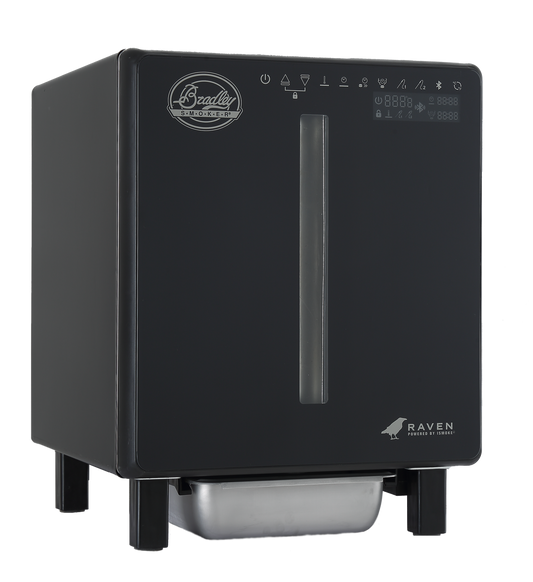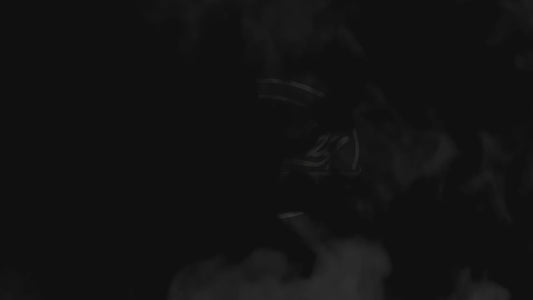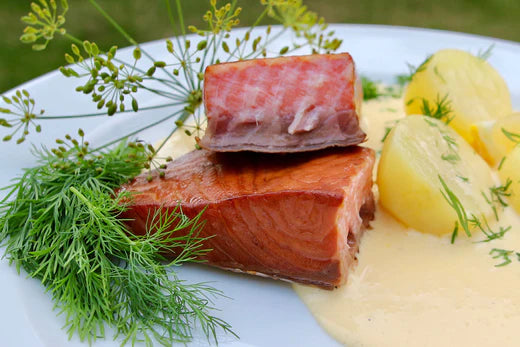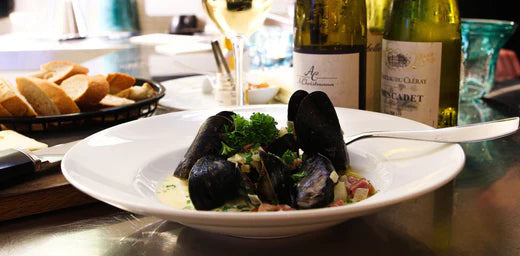
Smoked Chicken Pastrami Recipe
The dark meat of the chicken must be used for chicken pastrami. The Bradley Cure will fix the red color of the dark chicken meat in the same way that it fixes the red color of beef when we cure beef to make pastrami. Thighs are best for chicken pastrami.
Cook Pastrami thoroughly. Depending on the processor, it is steamed, hot smoked, boiled, oven roasted, or possibly even grilled. (Hot smoking can cause excessive drying. Oven roasting, too, unless you take some precautions)
Ingredients
Pastrami cure mix for 5 lbs. (2.5 KG) of meat:
3 Tbsp (45 ml) Bradley Sugar Cure (Do not use more than this amount.)
2 Tsp (10 ml) garlic powder
2 Tsp (10 ml) onion powder
1 Tsp (5 ml) red pepper
1 Tsp (5 ml) white pepper
1 Tsp (5 ml) oregano
1 Tsp (5 ml) paprika
½ Tsp (2½ ml) allspice
½ Tsp (2½ ml) powdered ginger
(Add a small amount of light corn syrup and coarsely ground pepper.)
Note: If the meat weighs either more or less than 5 pounds (2.25 kg), the amount of cure mix you apply must be proportional to that weight. For example, if the weight of the meat is 2½ pounds (1.15 kg), then each ingredient, including the Bradley Cure, needs to be cut in half.
Preparation
The Curing Process:
Weigh the skinned and boned thighs. If you plan to use more than one curing container, calculate separately the total weight of the meat that you will place in each container. Prepare, calculate, and measure the required amount of curing mixture for each container
Place the meat in the curing container(s). Rub the cure mix on all surfaces evenly, cover and refrigerate. The curing time should be one week. Set the refrigerator temperature between 34° and 40° F (2.2° to 4.4° C).
Overhaul the pieces of meat after about 12 hours of curing. (Overhaul means to rub the surfaces of the meat to redistribute the cure.) Be sure to wet the meat with any liquid that may have accumulated in the bottom of the curing container.
Overhaul the thighs about every other day until the required curing time (one week) has elapsed.
When the curing is finished, rinse each piece of meat very well in cool water.
Drain in a colander, and blot with a paper towel.
Use a basting brush to “paint” each thigh with light corn syrup, or honey diluted with a little water (this will help the pepper stick to the meat). Wait for a few minutes until the surface becomes tacky. Sprinkle and press on coarsely ground pepper.
Place as many thighs as possible on a paper towel, which you have placed on several layers of newspaper. Cover this with another paper towel and more newspaper. On top of this, continue to layer the paper and thighs in the same way. Refrigerate overnight.
Smoking:
Place the cured thighs on smoking racks or in smoking baskets. Dry at about 140°F (60°C) until the surface is dry (about an hour). Do not use smoke during the drying period.
To avoid excessive drying and excessively dark coloration, smoke the chicken at less than 85°F (30°C), if possible. Smoke the chicken pastrami for 3 to 6 hours, depending on how smoky you want the meat. Raise the temperature to about 145°F (63°C) for an hour or two toward the end of the smoking time if you desire a darker coloration.
Steaming or Roasting:
You may roast he smoked pastrami in an oven, or steam it. In either case, the pastrami is done when the internal temperature is 180°F (82°C). Use an aluminum foil tent if the pastrami is cooked in an oven. If it is steamed, wrap each piece of pastrami in plastic food wrap before steaming, and use an electronic meat thermometer with a cable probe to monitor the internal temperature. (Use a large pan with an elevated rack inside to improvise a steamer; cover with a lid.)
Note: If the salt taste is too mild, add about 1 teaspoon of salt to the ingredients list the next time you make chicken pastrami. If the salt taste is too strong, reduce the amount of Bradley Cure by about 1 teaspoon.
Instructions prepared by Warren R. Anderson, author of Mastering the Craft of Smoking Food.







